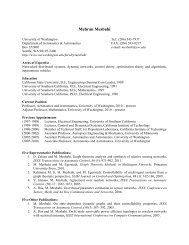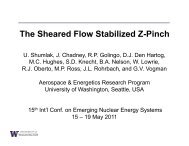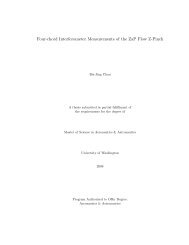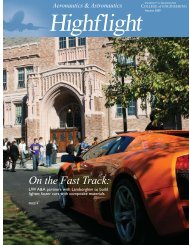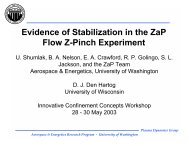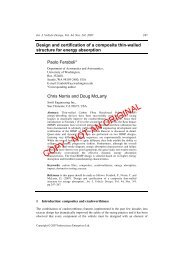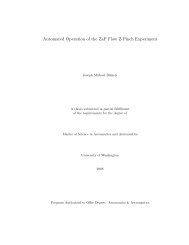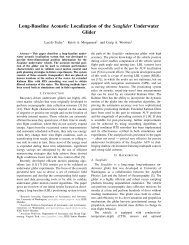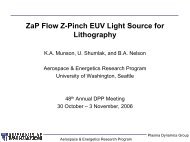Distributed Reactive Collision Avoidance - University of Washington
Distributed Reactive Collision Avoidance - University of Washington
Distributed Reactive Collision Avoidance - University of Washington
You also want an ePaper? Increase the reach of your titles
YUMPU automatically turns print PDFs into web optimized ePapers that Google loves.
26<br />
Figure 3.1):<br />
where R is the 2 × 2 rotation matrix. Now v ′ i = v j − aĉ where<br />
a = ĉ T v j ±<br />
ĉ = R(±α) ˜r<br />
‖˜r‖ , (4.1)<br />
√<br />
(ĉ T v j ) 2 − v T j v j + v T i v i, (4.2)<br />
and only solutions with real and positive values <strong>of</strong> a are valid. The list <strong>of</strong> v is ′ are ordered<br />
by increasing ∆v i and checked consecutively for conflicts with the other vehicles. Because<br />
<strong>of</strong> the ordering, as soon as a point is found which is conflict free for all j, it is the optimal<br />
solution and the algorithm terminates.<br />
There are a finite number <strong>of</strong> points to check as possible optima, which bounds the<br />
maximum possible time the deconfliction maneuver will take to compute. For a vehicle<br />
deconflicting with n other members <strong>of</strong> D, there are a maximum <strong>of</strong> 4n points to check. Each<br />
<strong>of</strong> these much be checked against a maximum <strong>of</strong> n − 1 other collision cones. Therefore<br />
the maximum computation time is upper-bounded by cn 2 , where c is related to the time<br />
each type <strong>of</strong> computation requires. In general, the computation times are less than this<br />
bound because as soon as a feasible point is found, the algorithm terminates, so most points<br />
are never computed or checked. This bound is better than a general “polynomial time”<br />
guarantee (as with convex optimization, for instance), since in this case the polynomial is<br />
known to be quadratic.<br />
This analysis would guarantee a conflict-free solution if the vehicle could attain its<br />
desired velocity vector instantaneously. However, the limited control authority available<br />
makes this impossible. Instead, it takes a finite amount <strong>of</strong> time for the vehicle to attain<br />
its desired velocity, and during that time it and the other vehicles move, which causes the<br />
collision cones to move. In order to ensure that the system is still conflict-free after this<br />
motion, the initial collision cones must be enlarged to the point <strong>of</strong> enclosing all possible<br />
movements.<br />
To bound the collision cone, one must simply bound ‖∆˜r‖ ≤ δ, or how much the vehicles<br />
can change position before the maneuver is complete. Then the width <strong>of</strong> the collision



